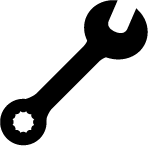The Process of Water Heater Installation in Your Home
Water heaters are vital in a home, ensuring a constant hot water supply for showering, dishwashing, and laundry. Over time, these appliances can become worn out or inefficient, and it may be necessary to install a new water heater. However, the installation process may seem daunting to some homeowners.
This blog discusses the steps involved in water heater installation and provides you with a basic understanding of what to expect.
Step 1: Evaluation and Planning
Before beginning the installation, it is important to assess your home's needs to determine the appropriate type and size of water heater. Factors such as the number of occupants in your home and your hot water usage should be considered. A professional plumber can advise you on choosing the right water heater for your needs.
Step 2: Removal of the Old Water Heater
Once you have chosen your new water heater, the next step is to remove the old one. First, turn off the power supply to the water heater. If it is an electric water heater, switch off the circuit breaker, and if it is gas-powered, turn off the gas supply. Drain the tank and empty the water into a suitable draining area.
Step 3: Making Necessary Connections
Before installing the new water heater, it is crucial to ensure that all the necessary connections are in place. This includes verifying that the water and gas supply lines, as well as the exhaust flue, are properly aligned and secured.
Step 4: Placement and Installation
Position the new water heater in the designated area, making sure it is level and stable. Begin the installation process by connecting the water supply lines. Depending on the type of water heater, this may involve attaching cold-water inlet and hot-water outlet pipes. Appropriate fittings ensure a tight seal to prevent leaks.
Step 5: Venting and Electrical Connections
For gas water heaters, proper venting is crucial to ensure the safe removal of combustion gases. Follow the manufacturer's instructions to connect the exhaust flue to the water heater and ensure that it is properly aligned and secured. If you are installing an electric water heater, ensure that the electrical connections are made in accordance with local regulations and safety standards.
Step 6: Testing and Activation
Before using your newly installed water heater, it is important to test its functionality. Turn on the water supply and check for any leaks around the connections. Once you have confirmed that there are no leaks, you can activate the power supply. Allow the water heater to fill and heat, and check that hot water is readily available at the faucets.
Reach out to a local company that offers water heater installation services to learn more.
Share
